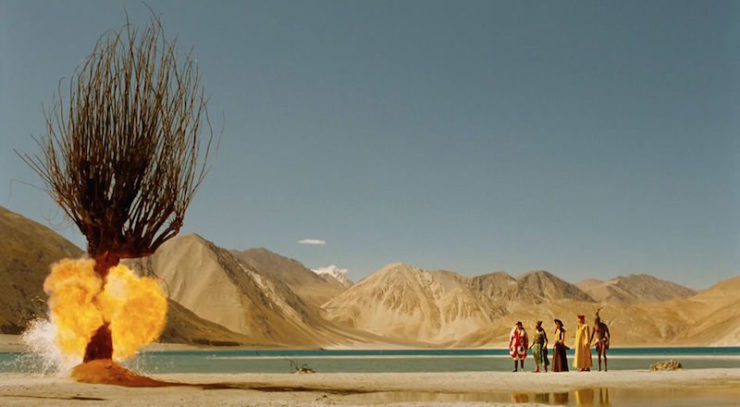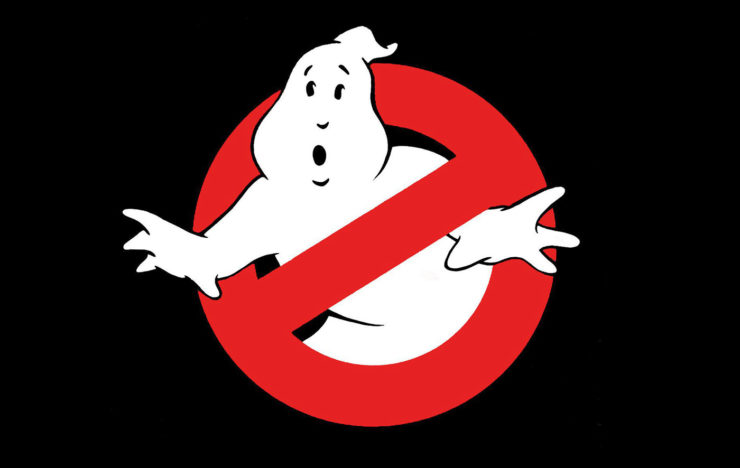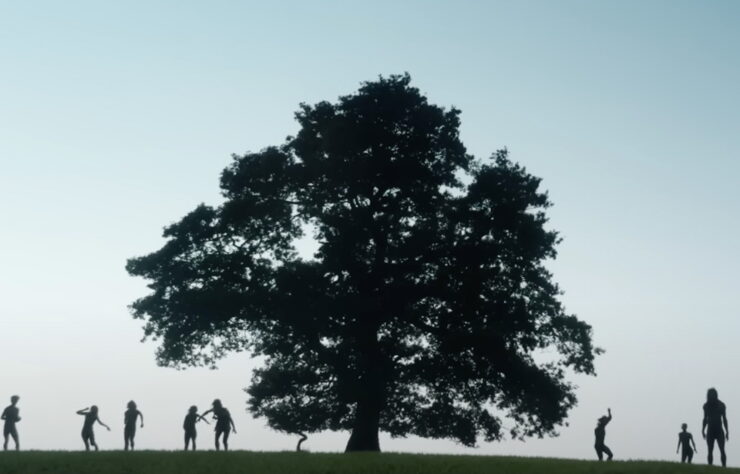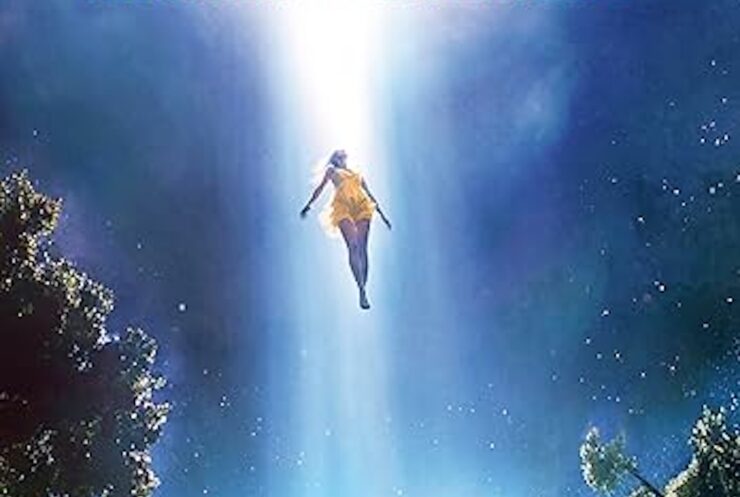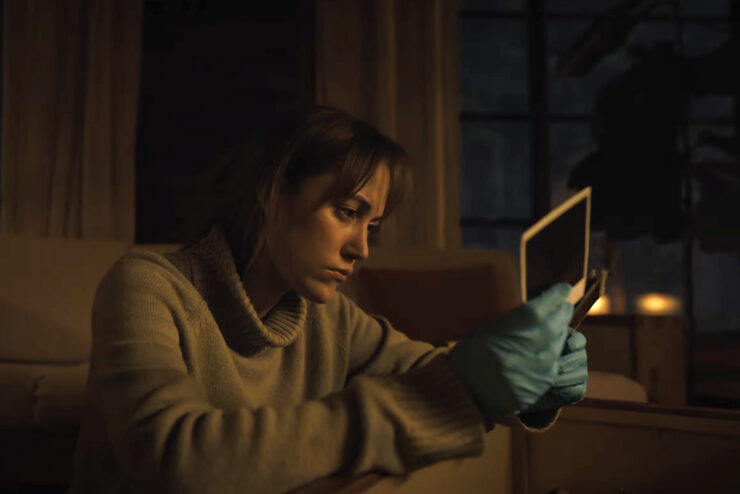When you want something in life, how do you get it?
Maybe you tell a story about it.
Maybe you tell your parents about the toy you simply must have. It’s the best toy. It will allow all your tiny tyrannical narrative dreams to come true. You’ll scale heights and crush enemies. You need this toy. It defines you and the stories you tell.
You tell a teacher why your interpretation of a book is the truest one. You tell a college why it wants you, you with your trove of stories that no one else has. You tell a company a story about why you are the perfect candidate for their perfect job. You tell a story about the life you want and it becomes the life you have. Or it doesn’t, and you keep editing that story.
They’re called life stories for a reason.
But a story needs two things: a teller, and a listener. You know this. You’ve told stories and pulled the jokes, pushed the punch lines, edited the worst (or best) bits. The story wants something, just like you want something. It wants to live, to be responded to, to compel a feeling, or maybe just a laugh.
Or maybe it’s the story that will define you. You never know.
The Fall is a story about stories. It’s full of contradictions: a film made by a visionary director, Tarsem Singh, that tells a story about how no story is the product of just one teller. A story that doesn’t make logical, traditional sense, but a story that makes perfect, simple sense in what it says: you can never know how someone will respond to your stories, what you’ll ask of each other, what you’ll give. You can only control so much. The story never belongs only to you. No one but Singh (who went by simply “Tarsem” back then) could’ve made this movie, but it couldn’t have happened without the people who perform the story, the people who made it look and sound the way it does (especially cinematographer Colin Watkinson), and the people who understand it.
It’s been ten years since The Fall was released in the U.S., and there’s been nothing like it.
There are a lot of reasons why.
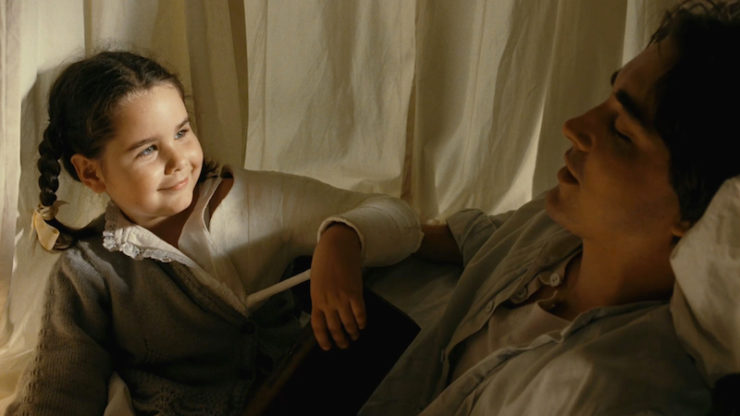
When you start picking through interviews with Singh, you see the rhythms of the film, sometimes slapdash, sometimes elegiac, sometimes practical, sometimes beyond romantic. It’s a simple story on the outside: In once-upon-a-time Los Angeles, circa the silent film era, an injured novice stuntman tells a story to a little girl in Dorothy Gale braids as they both convalesce in a hospital. His imagination and hers have fed on different things, and so teller and listener create something new as the story goes along, its ups and downs shaped by the stuntman, brokenhearted and angry and not at all sure he wants to live.
He fell while jumping off a bridge. She fell picking oranges. Probably neither of them should have been in their respective situations: he too green, the stunt too dangerous; she too young to be working in the fields. The Fall doesn’t linger on any of this, because it trusts you to pick up the context. When it comes to showing, Singh is much more interested in the pinhole-camera effect of a keyhole, which shows little Alexandria (Catinca Untaru) the projection of an upside-down horse—or in the green walls of the hospital, which set off Alexandria’s white dress and white cast, and the off-white bedsheets of Roy (Lee Pace).
Before (and, let’s be honest, after) directing The Fall, Singh was widely known for commercials, music videos, and the Jennifer Lopez serial killer movie The Cell. People who don’t like The Fall often dismiss it as style over substance, and there is one part of that I cannot argue with: the style. This is a movie full of contrasts, of shots in which people are small against stunning, overwhelming landscapes. Singh knows when to slow things down for spare, striking effect, as when filming from underneath a swimming elephant, and when to let a meaningful moment happen in the background, for you to find on a second or third watch. He wants you to see something you haven’t seen—or to see something you have seen, but from a new angle. A girl making friends with a man. A woman running through a labyrinth. A city all in blue, like it wants to be in the sky.
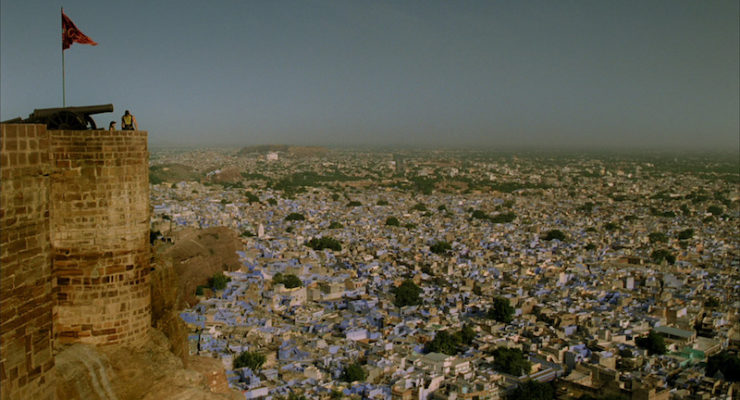
So he presents his simple story in glorious, decadent, lush style. The story of The Fall goes like this: Singh had the idea for the film decades before it was finished. (It’s loosely—very loosely—based on a Bulgarian film, Yo Ho Ho, that he purchased the rights to after watching it once.) He collected imagery, looked for the perfect child actor, tried to find financing. No one wanted to pay for the movie, which did not have a full script (the child’s imagination was needed to help shape the fantasy scenes) and called for location shooting all over the world.
So Singh, driven, financed it himself. “This is an obsession I wish I hadn’t had,” he told the LA Times. “It was just something I needed to exorcise. You have to make your personal films when you’re still young. I knew if I didn’t do it now, it would never happen.”
This story, like most stories, gets romanticized to varying degrees; this is a movie that almost begs to be mythologized. In some tellings, Singh shot much of the movie by piggybacking on his commercial work, flying in actors after he’d completed a commercial job in some stunning location. In an interview with the AV Club, Tarsem explained that this was just the end of the shoot. The hospital sequences were a simpler process, twelve weeks of filming at a South African asylum. After that, to fill in the characters’ backstories, he shot around the world.
The striking black-and-white credits notwithstanding, everything starts in that hospital. From the minute a poorly thrown note lands in his lap, Roy is curious about Alexandria (the barely intelligible note seems to confess both something about throwing oranges, and Alexandria’s love for Nurse Evelyn). The girl half sneaks, half barrels into his room, wanting her note back. It wasn’t for him. He’s butting in on her story; she wasn’t telling it for him.
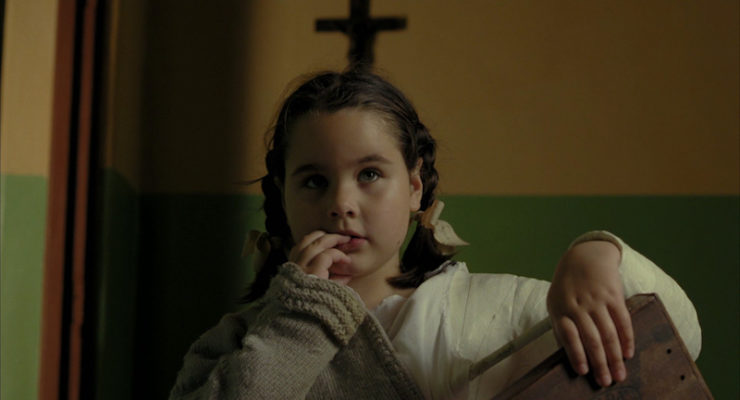
He understands this, and so he returns a story: one about Alexander the Great, whose choices are understandably baffling to a young child. It’s not the best story for Alexandria, who carries around a box of things she likes, and who makes the most of her seeming free run of the place. So Roy promises her another story. An epic. (It doesn’t matter that she doesn’t know what that means.) Romance, danger, the works.
What else does she have to do? Of course she comes back.
Roy’s story is a mess, but it’s a glorious mess as we see it through Alexandria’s imagination—a tangle of love, revenge, hurt, heartache, rage, and longing, set in impossible locales and starring a cast pulled from both Roy’s personal life and Alexandria’s world (there’s hardly a person who doesn’t appear in both the hospital and the fantasy). The players and the setting change, but parts of the story stay the same: A man has had his heart broken, and he will get revenge on the man he blames for this.
Nothing is ever so simple.
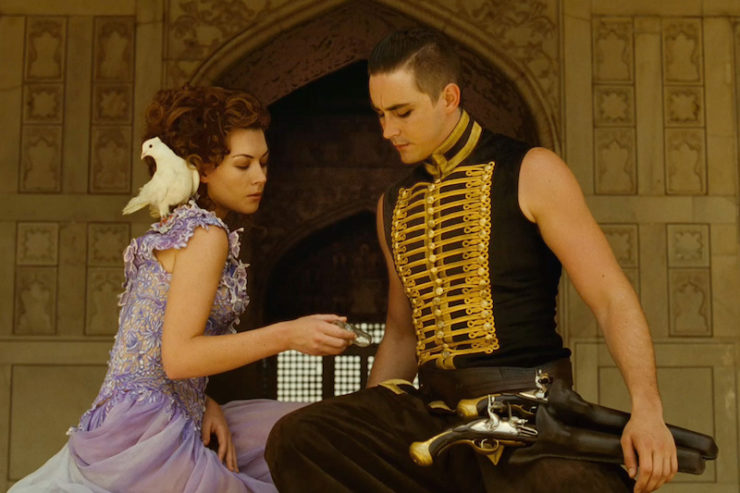
What does Alexandria get out of this? Company, sure, and maybe a father figure, a fierce fictional bandit doing things for love, who might have a surprisingly tough daughter when push comes to shove. She’s lonely—we see that in her late night trip to Nurse Evelyn’s lap—and she’s a born extrovert, the kind of person everyone talks to, from the man who delivers the ice to the old man who takes out his teeth at night. She’s also still a kid, and when something scares her, like the X-ray technicians with their giant helmets, she freezes.
But what Roy gets out of it is both what he wants, and exactly what he doesn’t want. His loneliness is a different kind, and he’s done with it. The story, he eventually confesses to Alexandria, was just a trick to get her to do something for him: bring him enough morphine from the dispensary that he can go to sleep and not wake up.
It’s a trick, all right, but not the outcome he expected. When The Fall is not a heartfelt story about tellers and listeners of tales—Roy says “the Indian,” meaning an old stereotype of a Native American; the little girl sees the friend who gave her a toy elephant, who came from India—it is a crushingly emotional, stunningly filmed exploration of the kind of love you can’t see coming. Roy thinks he’s so heartbroken he will never love again, and so he wants to die (his romantic rival stars in his story as the terrible Governor Odious), but he’s limited himself to the idea of romantic love—an idea Alexandria doesn’t truly have yet. She loves like a little kid, pure and undemanding; she loves Nurse Evelyn, and she loves Roy.
It would be too easy to shortcut this and say Alexandria saves Roy. When he tries to kill everyone in his story, she insists he tell her why. It’s my story, he says. Mine too! she asserts. And she’s right in a way that reshapes the movie and our expectations of who a story belongs to. When you tell a kid a story, you don’t know what they see. Singh doesn’t know what any of us see when we watch The Fall—the images he created, real and beautiful and not the least bit dated ten years later, sure. But every one of those images is filtered through our experience, just like Alexandria’s experience changes Roy’s story.

She does barge in and try to save him; she wrenches the story from his grip and pulls it in the direction she sees it going. There are different ways to love; maybe the lover was untrue, but the little girl wasn’t. Maybe a daughter isn’t just something you have by blood. What The Fall understands and shows us is that the teller of the story has to let it be changed, just as the listener has to be changed by the story. Roy isn’t saved; Roy saves himself.
There are few things on film as vulnerable as Lee Pace drinking and weeping as he confesses his guilt, his hurt, and his grief to tiny, crying Catinca Untaru, who believed during filming, that Pace, like his character, could not walk. It’s not important to the climax of the film, but it underscores the relationship they have on film: naive, plain, exploratory. Singh asked Untaru to help shape the stories, and the fantastical sequences sometimes have a child’s endearing disregard for logic. But the end, when Roy comes undone, realizing what he’s implicated this little girl in, and realizing that he feels worse about that than he thought he could feel—this is the story of someone who understands guilt and pain and the bad choices we make while in their thrall, and the way we need to be forgiven, or accepted. The way we need enough space and enough love to let us fuck up and keep going.
All of this, and I’ve said so little about Singh’s imagery: blood-red, sky-blue, saturated and full of butterflies and growling soldiers and places that seem solid enough in the real world until you line them up one after another, at which point they become a dream, a single land of everything beautiful. Everything still hurts in that beautiful land; everyone is betrayed, left alone, haunted, shouting his (alas, all his) pain into the sky. Everyone dies because Roy wants to die; Roy lives because Alexandria insists that his story is not the only story.
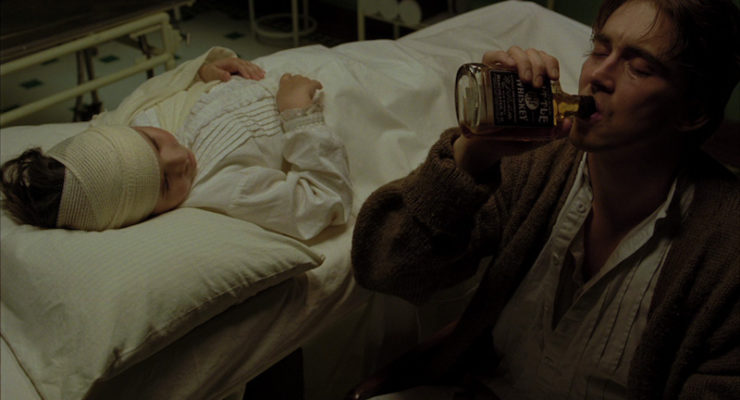
Nothing Singh has made since The Fall comes remotely close to this film’s precisely calibrated beauty, loneliness, and dreamy meta-storytelling magic—not his Snow White movie, Mirror Mirror, despite its gorgeous costumes and delightful cast; not the overwrought gods-among-men 3D violence-fest The Immortals; not what I saw of Emerald City, though it was very pretty. This movie feels like lightning striking repeatedly: Singh having the drive and the funds to make it himself; commercial work sending the director all over the globe, helping him collect shots; and the astonishing chemistry between the oft-underused Pace and little Untaru, who was not an actor and who barely spoke English when she was cast. (In one interview, Singh tells a story about how she started to pick up English too quickly—and with his Indian accent—and they had to bring in additional Romanians for her to talk to to keep her natural dialogue and rhythms.)
It’s hard to imagine someone having the money to pull this off, and to feel so driven that they would do so. “I’ve never known what to do with money,” Singh told Roger Ebert. “I live quite easily. Ninety-five percent of the time it seems like I’m on airplanes or in airports. I travel making commercials, I have a home that’s all paid for, and I’m a prostitute in love with a profession. I had no idea who my money was for. It wasn’t for the kids that I didn’t have, so I decided to cash in.”
Singh’s interviews after the film’s much-delayed initial release are refreshingly transparent about his desires, his ability to finance the film, and the way that he felt it simply had to be done now, practicality be damned. It took years for the thing to land in theaters, and then its splash was muffled, a fact Singh has attributed in part to a harsh pan in Variety when the film was still playing festivals, not yet released. But when Ebert called it “a mad folly,” he meant it as a compliment. Writing at my old job for the Eugene Weekly, I named it my favorite film of the year. Nothing else came close.
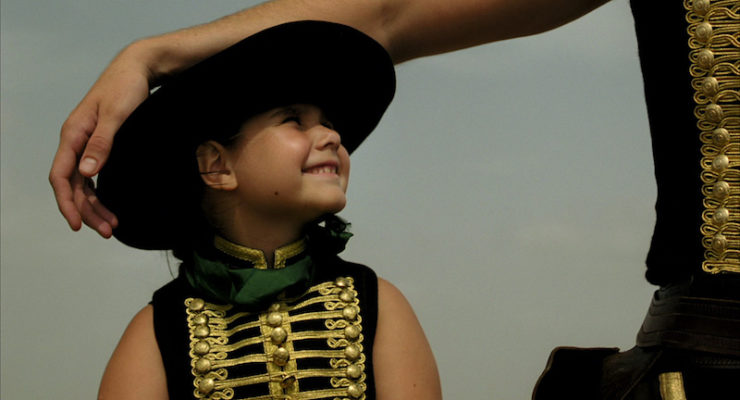
And nothing has—not from Singh, nor from anyone else. For some of us, stories about stories are absolutely the thing—stories about how what we tell ourselves about ourselves shapes who we are; stories about how we understand the world through story. The Fall has all of this: Roy telling Alexandria about his world through a story that she translates through her imagination, and that we then see through Singh’s vibrant visual language, which honors orange pickers and nurses the same way it does heroic avengers and heartbroken bandits; Roy unintentionally understanding himself better for telling Alexandria his story; the stories that wrap them both up, about movie studios and the future of how stories will be told at all. In the end, Alexandria finally sees her first movie, and she sees Roy’s face on all of the stuntmen, doing the things the actors don’t do. It’s what he does, in her vision: he is the masked bandit, the fighter, doing the impossible for love, in its surprising forms. She rewrites his story and he lets her, because he has to let someone tell him something better than the story he’s telling himself.
What if you let someone who loves you rewrite your story?
Who would you be?
When Molly Templeton is not at her day job at Tor.com, she writes about movies for the Eugene Weekly, rewatches Buffy, and impatiently awaits the next season of The Magicians. You can find her on Twitter.










